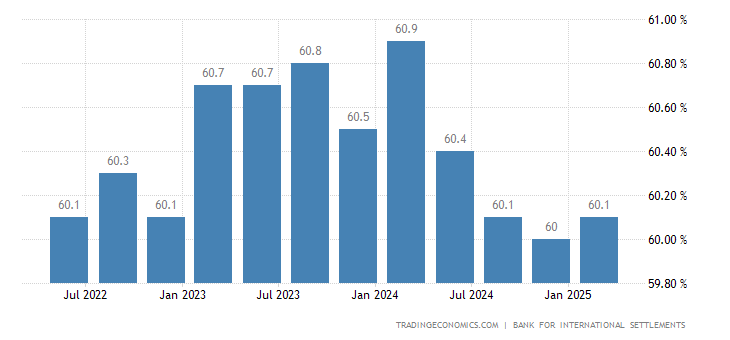(cont.)
Notes:
[1] Page 10: “Commercial banks are the key players at the centre of shadow credit intermediation (Figure 1, rose and red arrows). They are the main linkage between the suppliers and borrowers of funds in both the formal and the shadow banking system. Banks issue key shadow banking instruments such as wealth management products (WMP), they channel investors’ funds and provide liquidity to other shadow banking entities (eg trust companies), and they are holders of shadow banking instruments such as trust beneficiary rights (TBR) or interbank WMPs.”
[2] Page 11: “Shadow banking provides credit to private firms which otherwise would be unavailable or too difficult to obtain. As these firms are typically more productive than their state-owned counterparts (Hsieh and Klenow (2009), Dollar and Wei (2007)), shadow credit is likely to lead to direct economic gains. Traditionally, most private firms as well as smaller state-owned enterprises (SOEs) have difficulties in accessing the formal credit market, as large state-owned banks prefer to lend to large SOEs (Hale and Long (2010), Lu et al (2015), Tsai (2016)). Banks’ preferences for large SOEs reflect historical relationships and high creditworthiness due to implicit or explicit government backing, reducing the credit supply to potentially more productive private firms. Shadow credit intermediation has helped to fill this gap.”
[3] Page 27: “Measures of the size and dynamics of shadow banking in China depend on the specific perspective that is taken. For instance, taking the ultimate creditor view yields a much larger size estimate than taking the ultimate borrower perspective, as a large portion of the proceeds from WMPs is channelled into the bond market. Taking a holistic view by summing up the volumes of shadow credit intermediation over the entire credit intermediation process naturally results in an even higher estimate. But doing so introduces a high degree of double-counting, if the measure of interest is shadow credit to ultimate borrowers. A sizeable share of the underlying investment of bank-issued WMPs, for instance, appears on trust companies’ balance sheets. Adding up the two may capture the total volume of activity by shadow banking intermediaries, but it substantially overstates the amount of shadow credit that eventually flows to ultimate borrowers.”
[4] Page 12: “Shadow banking in China is less complex than in the United States, as it involves fewer entity types and fewer steps of credit intermediation. Mostly, shadow credit intermediation in China is a one-step or two-step intermediation process, as it is effectively based on “plain vanilla” loans or instruments that entail a one-to-one link to the revenues from the underlying debt instruments. In contrast, a typical shadow credit intermediation process in the United States involves seven steps (“vertical slicing”) and a large number of financial entities (Adrian and Ashcraft (2016)).
Nevertheless, the tight linkages between shadow savings instruments and bond market, as well as the new forms of structured shadow credit intermediation, signal that shadow banking in China is growing more complex.”
[5]
Notes:
[1] Page 10: “Commercial banks are the key players at the centre of shadow credit intermediation (Figure 1, rose and red arrows). They are the main linkage between the suppliers and borrowers of funds in both the formal and the shadow banking system. Banks issue key shadow banking instruments such as wealth management products (WMP), they channel investors’ funds and provide liquidity to other shadow banking entities (eg trust companies), and they are holders of shadow banking instruments such as trust beneficiary rights (TBR) or interbank WMPs.”
[2] Page 11: “Shadow banking provides credit to private firms which otherwise would be unavailable or too difficult to obtain. As these firms are typically more productive than their state-owned counterparts (Hsieh and Klenow (2009), Dollar and Wei (2007)), shadow credit is likely to lead to direct economic gains. Traditionally, most private firms as well as smaller state-owned enterprises (SOEs) have difficulties in accessing the formal credit market, as large state-owned banks prefer to lend to large SOEs (Hale and Long (2010), Lu et al (2015), Tsai (2016)). Banks’ preferences for large SOEs reflect historical relationships and high creditworthiness due to implicit or explicit government backing, reducing the credit supply to potentially more productive private firms. Shadow credit intermediation has helped to fill this gap.”
[3] Page 27: “Measures of the size and dynamics of shadow banking in China depend on the specific perspective that is taken. For instance, taking the ultimate creditor view yields a much larger size estimate than taking the ultimate borrower perspective, as a large portion of the proceeds from WMPs is channelled into the bond market. Taking a holistic view by summing up the volumes of shadow credit intermediation over the entire credit intermediation process naturally results in an even higher estimate. But doing so introduces a high degree of double-counting, if the measure of interest is shadow credit to ultimate borrowers. A sizeable share of the underlying investment of bank-issued WMPs, for instance, appears on trust companies’ balance sheets. Adding up the two may capture the total volume of activity by shadow banking intermediaries, but it substantially overstates the amount of shadow credit that eventually flows to ultimate borrowers.”
[4] Page 12: “Shadow banking in China is less complex than in the United States, as it involves fewer entity types and fewer steps of credit intermediation. Mostly, shadow credit intermediation in China is a one-step or two-step intermediation process, as it is effectively based on “plain vanilla” loans or instruments that entail a one-to-one link to the revenues from the underlying debt instruments. In contrast, a typical shadow credit intermediation process in the United States involves seven steps (“vertical slicing”) and a large number of financial entities (Adrian and Ashcraft (2016)).
Nevertheless, the tight linkages between shadow savings instruments and bond market, as well as the new forms of structured shadow credit intermediation, signal that shadow banking in China is growing more complex.”
[5]


